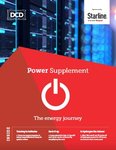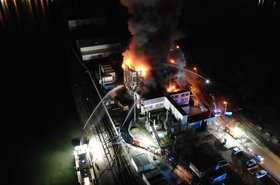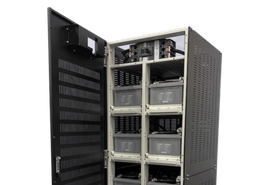Imagine you operate a business and someone tells you that with one easy change you can double your output, reduce your expenditures and be more safe and environmentally friendly – all at the same time. That is in essence what customers of nickel-zinc (NiZn) batteries in data centers are experiencing today.
Nickel-zinc is quickly becoming the most trusted battery chemistry for mission-critical applications ranging from providing backup power for the world’s data to intelligent transportation and the Defense industry. The US Navy’s Small Business Innovation Research (SBIR) program has called these batteries “the clear frontrunner” to power the next generation of submarines, citing them as the only battery suited for the energy density and safety standards required.
This is good news for data center operators however, many still do not fully understand this recently commercialized technology. Nickel-zinc has many performance advantages over lead-acid and has none of the safety and supply chain issues of lithium.
Also quickly emerging are large-format batteries that are capable of storing power generated by sun and wind for 6 hours or more – much longer than rival technologies. This important development is enabling data centers to use renewable energy for more hours each day and gain efficiency in areas where it’s not always sunny and breezy.
For those in the know, it’s clear that it is time to think zinc – both inside and outside of data centers.
More Power = More Savings
Nickel-zinc batteries achieve the highest power density of mainstream rechargeable battery chemistries and yet are still inherently safer than the current leading technologies such as lithium-ion. Because of its high-power density, NiZn batteries are capable of rapid charge and discharge over short periods of time making them ideal for data center backups. If higher power is not required, operators can simply fit NiZn into half the space of legacy lead-acid systems without sacrificing performance.
A sustainable raw material
Zinc is one of the most abundant minerals on Earth, and the fourth most used metal. How many other battery materials can say they are clean enough to be trusted in vitamins, animal feed and sunscreen? Further, zinc is inexpensive and has well-established supply chains present in all major regions. In fact, these are one of the few battery types that can be produced entirely in North America without sourcing foreign raw materials. Zinc batteries can also be recycled at their end of life.
A recent study by Boundless Impact Research and Analytics examined the greenhouse gas footprint of various batteries used in data centers including a nickel-zinc battery produced by ZincFive, a leader in this space. The analysis gave the nickel-zinc battery a climate impact score of 9.4 out of 10, significantly better than the other leading chemistries evaluated.
Safety first
The most important thing to know about zinc batteries is they will not and cannot catch fire. Not only is that paramount for the safety of employees and installations (and operators’ peace of mind), but it also means no expensive HVAC and fire prevention systems or regular maintenance. Zinc batteries also perform under the widest range of temperature – they perform as well at -40°F and 110°F as they do under more comfortable conditions.
Standards and regulations are rapidly progressing that clearly define the advantages of zinc chemistries for battery safety. The NFPA 855 is a single standards document that has emerged from the National Fire Protection Association which enables data center operators to manage the risk of their stored energy. Much has been written about this elsewhere for those interested in the details. However, all operators should take note of these tools that are making it easier to select battery systems that can be safely transported, installed and operated.
The future is renewables
All readers of this site know that data centers use a lot of energy. Like every other sector, renewable power is being quickly installed to meet these needs in the cleanest way possible. However, renewables suffer from low efficiency given that their raw ingredients of sun and wind are not available at all hours of the day. That is why we are experiencing exponential growth in large-scale battery storage systems.
Large format zinc batteries – zinc air, zinc-ion, zinc-manganese, etc – provide unique advantages for storing energy for multiple hours, or even days. Lithium battery systems are currently leading the way for installations due to their high energy density and the fact that fire risk is mitigated by being located outside in their own containers. However, these systems are only economical up to 3-4 hours of storage, which limits their usefulness. Zinc’s longer-duration capabilities – in addition to its advantages in cost, sustainability and safety – make these products the most promising batteries for powering data centers daily, in addition to serving as the choice for UPS.
Making the change
Zinc has always been a trusted resource for the battery industry. The world’s first battery created two centuries ago relied on zinc. Recent research has built on zinc’s inherent advantages for electrochemical storage to produce batteries suited to meet the most challenging demands of the 21st century.
With all of these considerations in mind, it’s no surprise that zinc technologies are emerging as the best alternative for data center backup power and renewables integration. If data center operators make the change, these technologies will help them lower the total cost of ownership of data center backup systems by increasing safety, sustainability, performance, and reliability. The future of data center backup systems is here.





